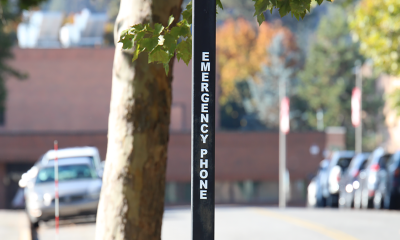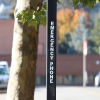Larceny, theft, vandalism among highest criminal offenses listed
NIC recently updated the crime statistics for the 2010 year in compliance with the Student Right-to-Know and Campus Security Act of 1990, or the “Clery Bill.”
The Clery Bill is a federal law that requires colleges and universities to disclose information about crime on and around their campuses.
Colleges must provide the most recent three years’ worth of statistics from January to January of the selected year, but the numbers are published the first of October each year.
The highest number of criminal offenses at NIC in the last three years occurred in the larceny/theft and vandalism categories.
The statistics are organized into the categories of on-campus, residence halls, non-campus and public property. Non-campus is loosely defined as any building that is controlled or owned by the college – this can also include rooms rented by the college. Public property includes areas like Rosenberry Drive: a street owned by the city but adjacent to college property.
“With the campus expanding, it’s becoming a larger service area to deal with,” said Bob Thomson, lieutenant security and emergency services
For the 2010 year, there were 22 larceny/theft offenses on campus and two in the residence hall; in 2009, there were 11 on campus, and 11 in the residence halls, and one on public property.
In 2010, there were nine vandalism offenses on campus, and 10 in the residence halls; in 2009, there were 10 vandalism offenses on campus and 10 in the residence hall. The full numbers can be accessed through the NIC Security website at www.nic.edu/security.
“It’s a huge responsibility to make sure information is documented properly,” Thomson said. “It’s almost a full-time job to keep up with this.”
NIC’s security force is armed with Tasers and pepper spray. Members of NIC security must get re-certified for Taser use every year, and instructors must get re-certified every two years.
“We’re not here to be shooting people,” Thomson said. “The reason we got [the Tasers] is defense of ourselves, defense of students, staff and visitors.”
The Student Right-to-Know and Campus Security Act was a response to the murder of Jeanne Clery, a student at Lehigh University, a private four-year institution in Bethlehem, Penn. Clery was tortured, raped and killed in her dormitory room in 1986. Her assailant was convicted and sentenced to death.
Her parents, Connie and Howard Clery, founded Security on Campus, Inc., the first national nonprofit organization that is devoted to preventing criminal violence at colleges and assisting campus victims.
The Clery Act has been amended several times over the years.
In 1992, schools were required to provide victims of campus sexual assault with certain basic rights.
In 1998, reporting requirements were increased.
In 2000 and 2008, notification of registered sex offenders and campus emergency response was added.











